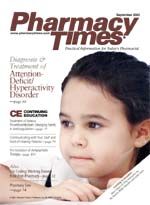Publication
Article
Pharmacy Times
Acne Drug May Cause Gum Discoloration
Minocycline, a commonly prescribed antibiotic in the treatment of acne and rheumatoid arthritis, can cause teeth and bone to discolor. This discoloration may cause the gum tissue to appear blackish-blue in color, according to a case report recently published in the Journal of Periodontology. Dental experts stress the importance of making patients taking the drug and physicians prescribing it aware of the possibility of oral discoloration.
In the reported case, a woman was referred to the periodontics department at the Mayo Clinic for evaluation of the blue appearance of the gum tissue and bone surrounding her teeth. The researchers learned that she had been taking 50 mg of minocycline 4 times a day for 17 months. ?This case definitely drives home the importance of collaboration between medical and dental professionals,? said Gordon Douglass, DDS, president of the American Academy of Periodontology. ?Periodontists have known for awhile that medical drugs can affect a person?s oral health, and this is a reminder for patients to inform their dental professionals of all medications they are taking.?
Approximately 3% to 6% of long-term users of minocycline will develop dental staining, the report said. Although the discoloration is not harmful to the teeth, bone, or gum tissue, the antibiotic is responsible for the blackish-blue appearance of the gums. The periodontal bone can become discolored from the drug and show through the gum tissue, causing further discoloration.

Newsletter
Stay informed on drug updates, treatment guidelines, and pharmacy practice trends—subscribe to Pharmacy Times for weekly clinical insights.






